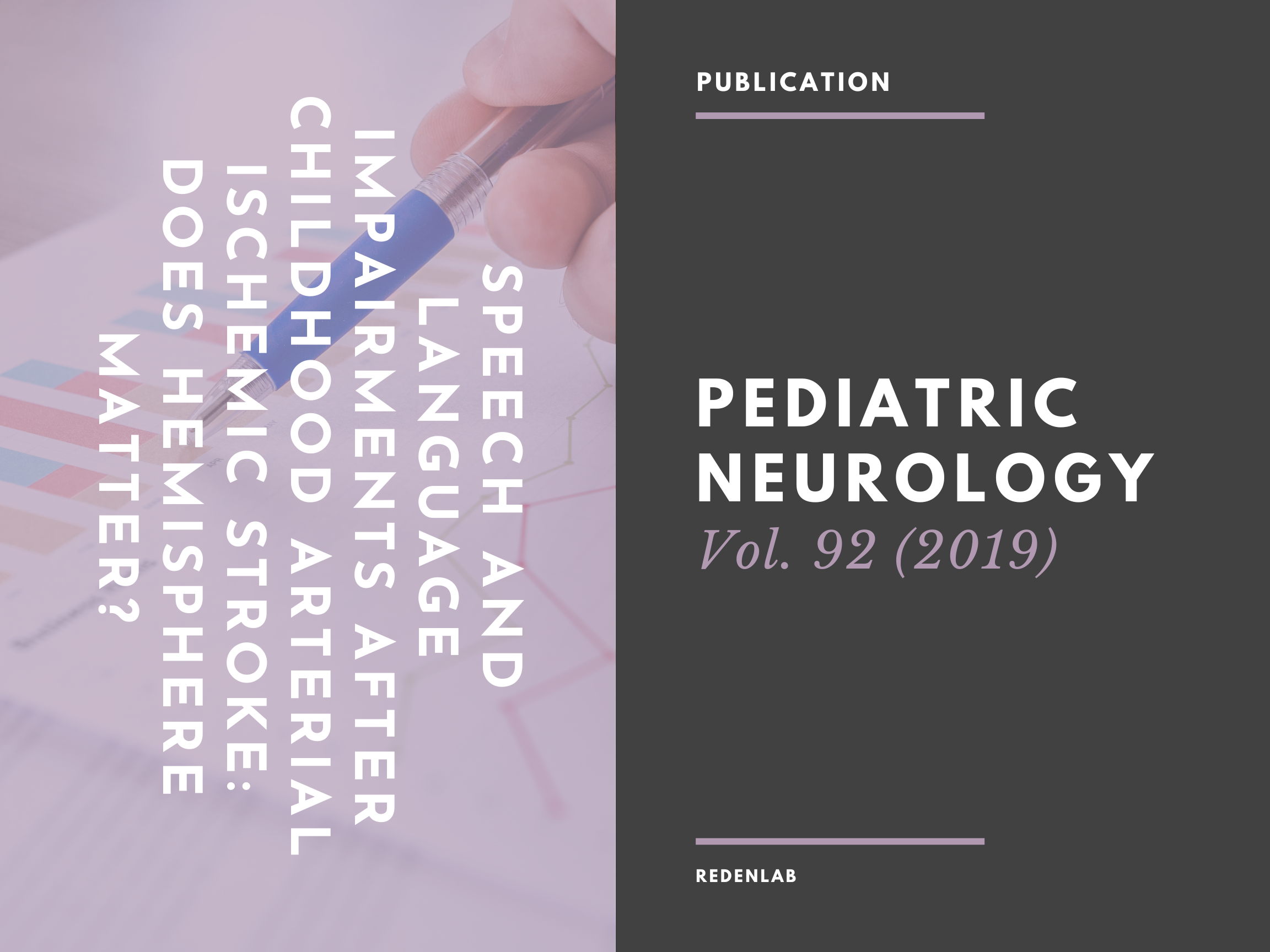SCIENCE: Speech and language impairments after childhood arterial ischemic stroke

BACKGROUND:
The association between left hemisphere stroke and acute speech and language impairment is well documented in adults. However, little is known about this association in childhood arterial ischemic stroke. Here we examined potential predictors of acute speech (dysarthria and apraxia) and language impairments after childhood arterial ischemic stroke, including site of lesion.
METHODS:
Children with radiologically confirmed acute arterial ischemic stroke, admitted to a tertiary pediatric hospital from 2004 to 2012, were identified from an institutional registry. We examined the prevalence of dysarthria, apraxia, and language impairment within two weeks of the stroke. Associations with age at stroke event, lesion side (left, right, or bilateral), and arterial territory affected (anterior, posterior, or both) were assessed using logistic regression.
RESULTS:
Sixty-two children with mean age eight years (range three to 17 years) were identified. Strokes were located in the left (32%), right (44%), or both hemispheres (24%). Dysarthria (74%) and language impairment (50%) were frequent. Verbal dyspraxia was less common (11%). There was little evidence that variables of interest, including site of lesion, were significantly associated with increased odds of dysarthria or language impairment (all P > 0.49).
CONCLUSIONS:
Regardless of age, children are at high risk of communication disorders after stroke. Unlike adults, left hemisphere stroke was not associated with either speech or language impairment in our cohort, suggesting there may be bihemispheric contribution to language function. Future studies are needed to examine whether the predictors examined here determine long-term outcomes.
Click here for more details.
